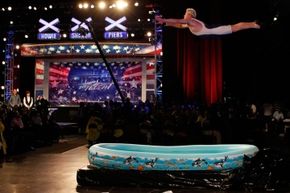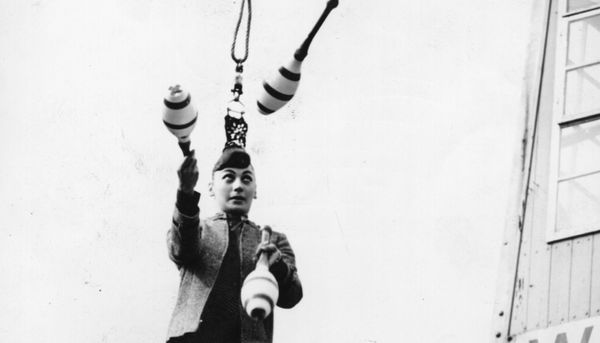Every swimming pool has that slightly ominous warning sign: "No Diving in Shallow End." The reasons are obvious to most people — too much velocity and too little water equal a broken neck. It seems a little nutty, then, to think that a few humans make a livelihood diving from as high as possible into what basically amounts to a puddle of water. They're called shallow divers, and they are masters of their own fears, and physics, too.
Shallow divers are essentially professional belly floppers. It is — literally and figuratively — a gut-wrenching way to pay the mortgage.
Advertisement
If you've ever gone swimming, you probably know the pain and suffering of a dive gone wrong. You launch from a diving board and soar towards the water below, and suddenly your animal instincts say your body's angle and trajectory are all wrong, and you hit the pool in an intestine-warping belly flop.
The water stings every inch of your skin. It slams through your bones with crunching force. You float motionless in the water shuddering, waiting for the pain of impact to fade.
Now imagine belly flopping from four stories high, on purpose. As you can probably guess, there aren't too many people out there willing to suffer the fear and physical pain of shallow diving. Those that can consistently perform the feat may turn into sideshow cult heroes of sorts, circus celebrities who make headlines all over the country and all over the world.
Advertisement





